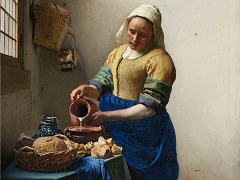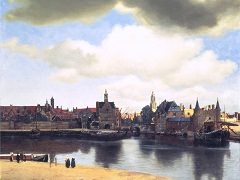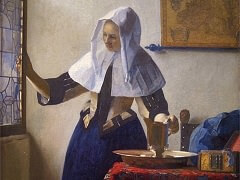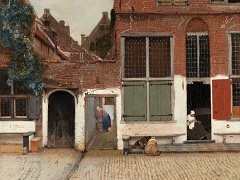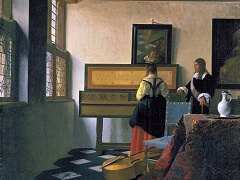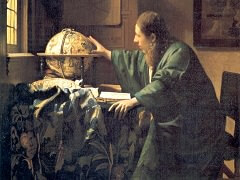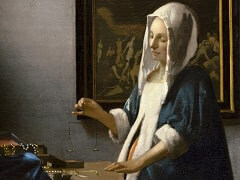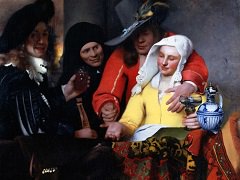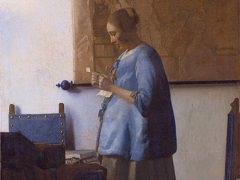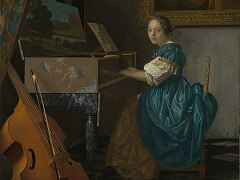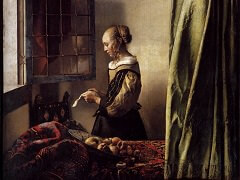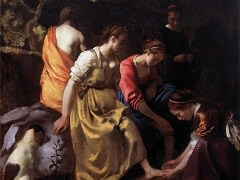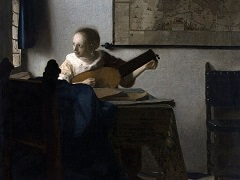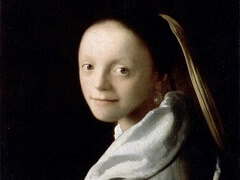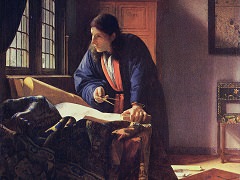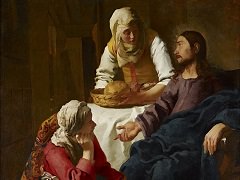The Art of Painting, 1666 by Johannes Vermeer
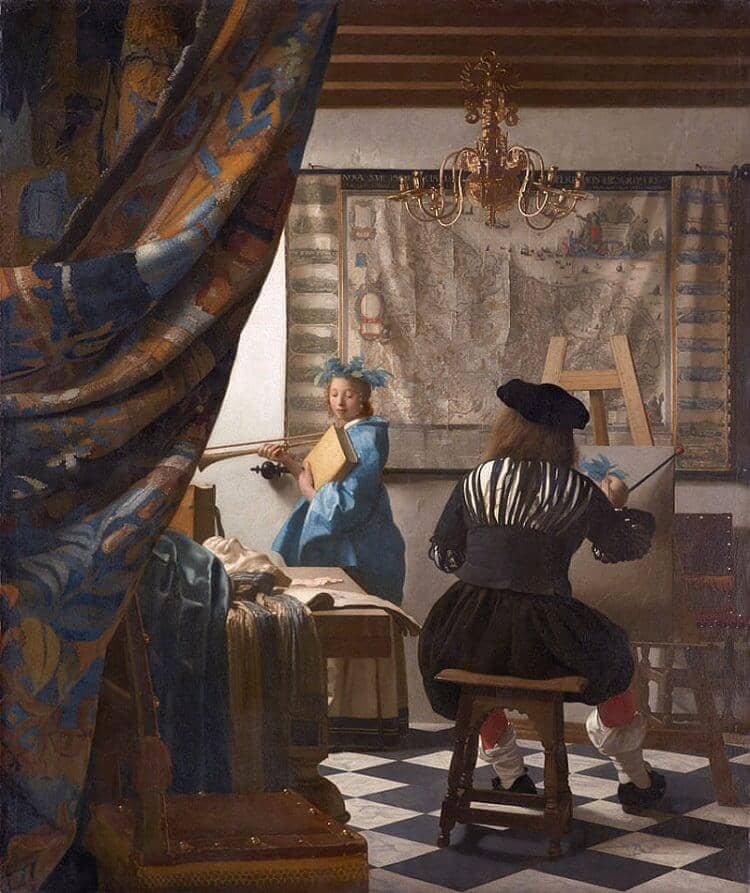
Throughout much of his career Vermeer drew inspiration from his observations of daily life, but he remained at his core a history painter, one who sought to evoke abstract meanings in his works. He used color, light, perspective, and objects including pearls, paintings, and maps - to help express the fundamental spiritual and human emotions he wished to instill in his paintings. While most of his scenes look real, in two instances, The Art of Painting and Allegory of Faith, allegory takes precedence.
In The Art of Painting Vermeer sought to indicate how the artist, through his awareness of history and his ability to paint elevated subjects, brings fame to his native city and country. Vermeer announces his allegorical intent with a large curtain, drawn back as though revealing a tableau vivant of an artist painting a young model. Her attributes a laurel wreath symbolizing honor and glory, a large book signifying history, and the trumpet of fame - identify her as Clio, the muse of history. Other objects in the elaborate interior reinforce Vermeer's underlying concept. The large map of the Netherlands with its flanking city views was outdated when Vermeer depicted it, its age apparent from the vertical creases crossing its middle. Similarly, the chandelier, which is surmounted by a double-headed eagle, the imperial symbol of the Hapsburgs, refers to an earlier era when that dynasty ruled the country.



